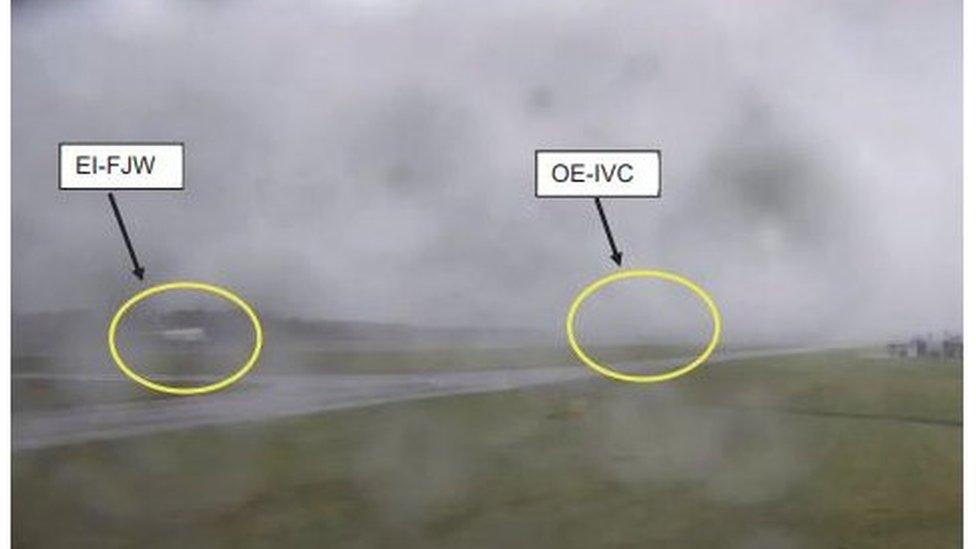Report reveals 'runway incursion' at Edinburgh Airport
- Published

The landing Boeing 737, with the EI-FJW registration, was less than 1km from the departing Airbus A320 (OE-IVC)
Two planes came within 875 metres of each other at a Scottish airport, an investigation has found.
An Air Accidents Investigation Branch (AAIB) report found the landing Boeing 737 was less than 1km away from a departing Airbus A320 at Edinburgh Airport.
The incident in August last year is described by investigators as a "loss of separation" between the two planes.
The AAIB said it had been caused by delays and inexperienced staff.
The airport's air navigation service provider has reviewed operations at Edinburgh and taken a number of safety measures to improve procedures and on-the-job training for trainee air traffic controllers.
More than 350 people were on both flights and no-one was injured as a result of the "runway incursion".
In its report, the AAIB stated: "A landing Boeing 737 closed to within 875 metres of a departing Airbus A320 when landing at Edinburgh airport.
"The airport air traffic control service provider defined this as a runway incursion as the 737 was over the runway surface when the A320 was still on its take-off roll.
"A combination of factors, including brief delays to the departure of the A320 and the speed of the Boeing 737 being higher than normal, led to the reduction in separation before the controllers became aware of the closeness of the aircraft.
"The trainee controller lacked the experience to resolve the situation in a timely manner and the supervising on-the-job training instructor judged it safer to let the 737 land than to initiate a go-around in proximity to the departing aircraft."

The distance between the two planes was so close that air investigators were asked to work out what went wrong
The report also noted the crew of the departing Airbus aircraft were unaware of the situation throughout and therefore could not react to it.
A spokesman for Edinburgh Airport said: "Safety is absolutely paramount in our operations, a priority shared by Air Navigation Solutions [the firm which provides air traffic control services at Edinburgh] and we have discussed this incident in depth with them.
"We are satisfied that the remedial measures put in place are robust and continue to regard safety as the number one priority."